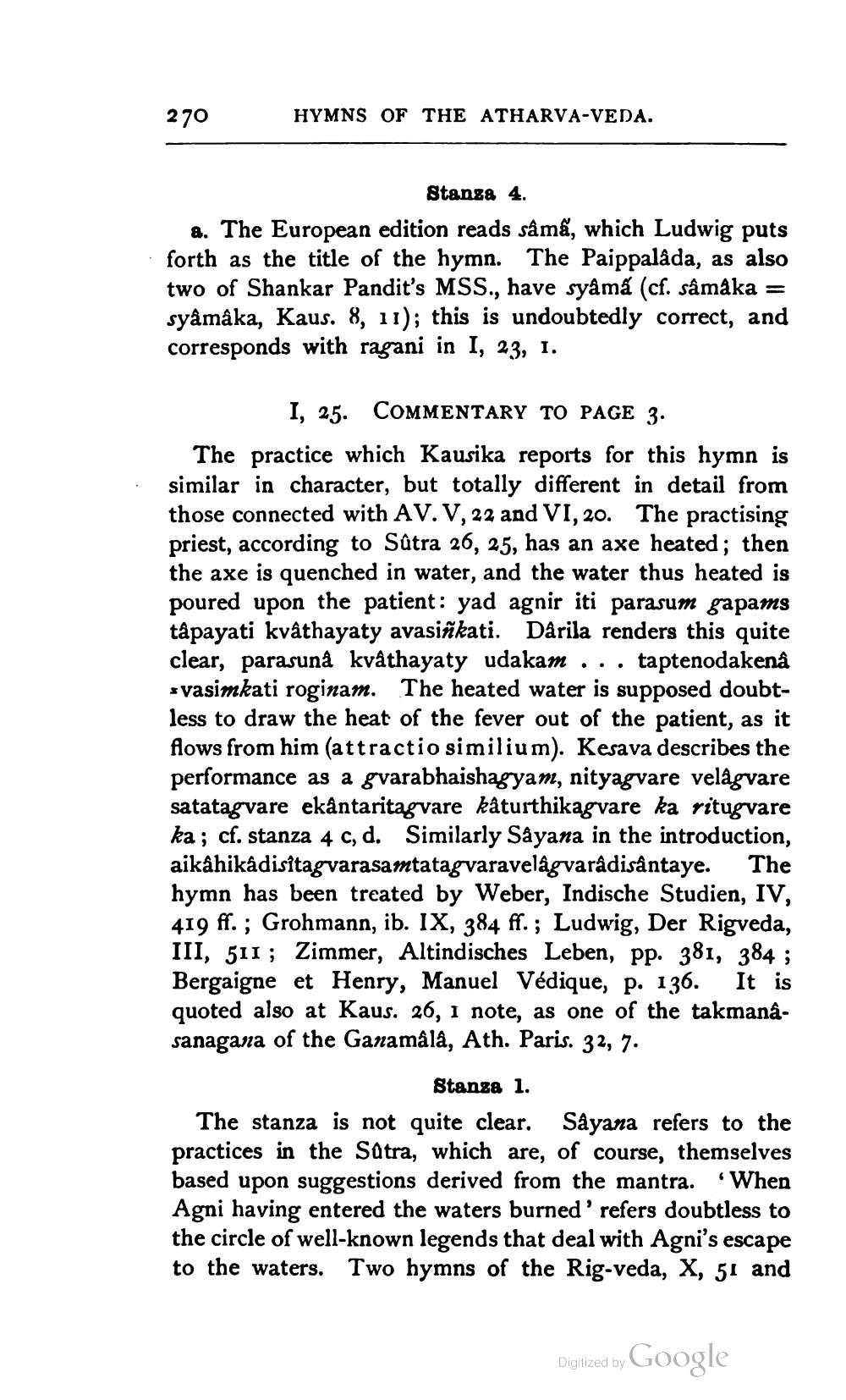________________
270
HYMNS OF THE ATHARVA-VEDA.
Stanza 4. a. The European edition reads sâmã, which Ludwig puts forth as the title of the hymn. The Paippalåda, as also two of Shankar Pandit's MSS., have syamá (cf. sâmåka = syâmâka, Kaus. 8, 11); this is undoubtedly correct, and corresponds with ragani in I, 23, 1.
I, 25. COMMENTARY TO PAGE 3. The practice which Kausika reports for this hymn is similar in character, but totally different in detail from those connected with AV. V, 22 and VI, 20. The practising priest, according to Sûtra 26, 25, has an axe heated; then the axe is quenched in water, and the water thus heated is poured upon the patient: yad agnir iti parasum gapams tâpayati kvathayaty avasiñkati. Darila renders this quite clear, parasunå kvåthayaty udakam ... taptenodakena svasimkati roginam. The heated water is supposed doubtless to draw the heat of the fever out of the patient, as it flows from him (attractio similium). Kesava describes the performance as a gvarabhaishagyan, nityagvare velågvare satatagvare ekântaritagvare kâturthikagvare ka ritugvare ka; cf. stanza 4 c, d. Similarly Såyana in the introduction, aikâhikâdisitagvarasamtatagvaravelågvarâdisântaye. The hymn has been treated by Weber, Indische Studien, IV, 419 ff.; Grohmann, ib. IX, 384 ff. ; Ludwig, Der Rigveda, III, 511; Zimmer, Altindisches Leben, pp. 381, 384 ; Bergaigne et Henry, Manuel Védique, p. 136. It is quoted also at Kaus. 26, 1 note, as one of the takmanasanagana of the Ganamâlâ, Ath. Paris. 32, 7.
Stanza 1. The stanza is not quite clear. Sayana refers to the practices in the Satra, which are, of course, themselves based upon suggestions derived from the mantra. 'When Agni having entered the waters burned' refers doubtless to the circle of well-known legends that deal with Agni's escape to the waters. Two hymns of the Rig-veda, X, 51 and
Digized by Google




